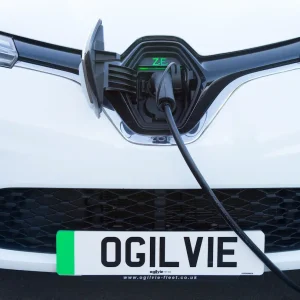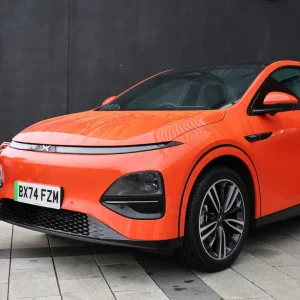Top-spec and sport trim vans are becoming a popular sight on UK roads. But would fleet operators benefit from purchasing these more expensive vehicles when it comes to the auction hall? Rachel Burgess investigates
Fleet managers are always looking for ways to keep costs down, and cutting back on vehicle specification is an obvious way to reduce front-end expenditure. But, taking a longer term view, would they be better off if they instead acquired higher spec vans that would be worth more at disposal time?
“Irrespective of how vehicle manufacturers attempt to differentiate their products and prices in the new vehicle market, it’s always worth bearing in mind when deciding on an LCV’s specification that trade buyers are like any other customers – they buy benefits not features,” says Ken Brown, CAP current valuation manager – LCVs.
“Where they differ is they will only consider a product feature to be a benefit if their customers are willing to pay extra for it. If specifying a model that comes with a branded package of features, it’s important to understand how much value each of those features will add when disposal time comes along.” (See below).
It is also important to differentiate between a desirable top-specification van and the Sport editions, which are squarely aimed at the retail market and the small business operator, says Duncan Ward, BCA’s UK business development manager – commercial vehicles.
“They do differ because they serve different needs. The high-spec van may boast air conditioning, metallic paint, integral fitted satellite navigation, cloth trim, Bluetooth capability, and one or maybe even two side loading doors. The ‘sport editions’ will feature high-power engines, oversize alloy wheels, sport seats, front and rear spoilers, tinted windows, chrome exhausts, and often racing stripes over a metallic finish.
“Sports vans are aimed very much at owner/operators who would probably drive a performance car if they were not driving a van, and the vehicle may double-up as family or recreational transport outside of working hours.”
Ward continues: “Vauxhall have lead the way with their Astravan Sportive versions over the last decade. Typically these have sold for a hefty premium over the equivalent ‘standard’ model, but these price differences have gradually reduced as more have come into the market.
“In recent years we have seen the sport model concept introduced to larger vans such as the Vauxhall Vivaro Sportive, VW Transporter Sportline and Transit Sportvan. (The latter two are the rarer and therefore the most competitively sought after). Used values will routinely outstrip the standard model by a considerable margin and will usually outperform a similarly specified ‘fleet’ van that simply lacks some of those retail refinements such as the special paint and body kit.”
Volume problem
Ward says on resale value alone, there could be a significant temptation for operators to up-spec their fleet to sports vans at change-over time, but it is a move that needs careful consideration.
“Firstly, a fleet van is a billboard for the business, but dressing a sports van in corporate colours will impact on the desirability at resale time. Vinyl wraps could be considered, but then there are additional cost implications at the front end.
“Then there is the volume issue. Sports vans are desirable both because of their attractive specification and the fact they are in short supply – the typical retail buyer is likely to keep the van for some time and those that appear in the wholesale arena are often from finance sources or early lease terminations,” he adds.
If there was a known regular supply of three- to five-year old sports vans from fleet sources, it could affect the price significantly.
“The corporate sector also needs vans to do specific jobs – functionality is often far more important than simply looking pretty when sitting on the drive or making deliveries to customers. If a van is likely to have a long and hard working life, it would be hard to argue the case for investing in a sports model.”
Leading van rental company Northgate says it does not purchase top-spec vehicles because of the impact on the cost of ownership: “Our view is that the resulting residual values do not justify the up-front purchase costs.”
Ward concludes: “The wholesale vehicle market is all about supply and demand – rare and desirable vehicles only command higher prices while they remain in short supply. Upset the balance and any used resale price benefit might swiftly melt away.”
Paint and ply: what you should choose from the specification list
CAP’s LCV valuation manager Ken Brown says there are some fairly obvious things to consider at the top of any specification list:
Ply lining kits
“Some fleets/leasing companies still supply vans without this relatively inexpensive option that protects the floor and body side panels from being damaged from the inside by the load. They pay for themselves many times over, even on the shortest of contracts. Vans/pick-ups without lining kits invariably sell for well under the guide price. At auctions so-called ‘inside-out’ dents are easy to spot and on 4×4 pick-ups you will always see experienced buyers making straight for the load section to check for damage, particularly on lifestyle models. The top face of the pick-up body sides and tailboards are particularly prone to damage and can easily lose a potential buyer’s attention.”
Metallic paint
“There is always plenty of interest at auctions for clean vehicles in metallic finish and you can expect to sell them quicker and recover most if not all of the additional cost when new. However, if at all possible, choose your clients very carefully when supplying vehicles in metallic paint since rectifying paintwork defects can be expensive at the end of contract. Metallic paint can be notoriously difficult to colour match when spot repairs are required. Often the only solution is to repaint complete sides of a vehicle to achieve an acceptable finish and colour match. Trade buyers know this all too well, so damaged vehicles in metallic paint can actually sell for less than those in straight colours. Silvers, blues and reds remain the most popular metallic colours, but avoid greens.”
Side load doors
“These improve the versatility of panel vans, and those fitted with at least one unglazed door on the nearside will always sell better at auction. They are almost obligatory in the small van sector, adding around £200-£300 on average to used price it is worth considering specifying side load doors even if they aren’t required in their first life to make the van more saleable at disposal time.”
Bulkheads
“Adding around £100 to the used value, factory-fitted bulkheads are preferred. It is important that the bulkhead does not restrict the natural flexing of a van’s bodyshell along its entire length.
If a bulkhead fits too tightly or is made of heavy-duty material that restricts this natural movement, it can lead to cracks in body panels and panel seams thereby having a negative effect on value. Full-height bulkheads also dramatically reduce noise levels inside the cab, help to restrain the load under heavy braking and improve load security particularly, where vehicles are fitted with unglazed rear doors.”
Air conditioning
“Often aircon is an optional extra or forms part of a more expensive higher specification model or option pack, and on average it will add around £350 to the used value depending on the make/model. On some used Volkswagen Transporter models that are earmarked for conversion into lifestyle camper or day vans, at auction it can add as much as £1000 to the used value, which is perhaps not surprising when you consider the high cost of retrofit systems. It’s also worth bearing in mind that panel vans fitted with air conditioning should also have a full height and width bulkhead separating the load space from the driver’s cab area.”





